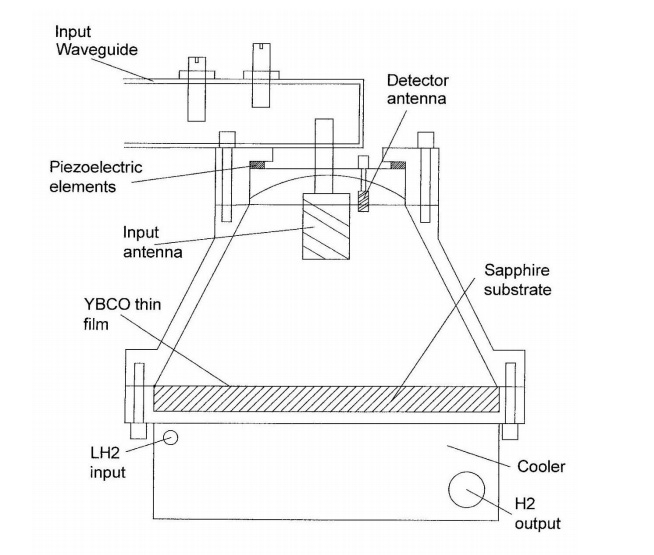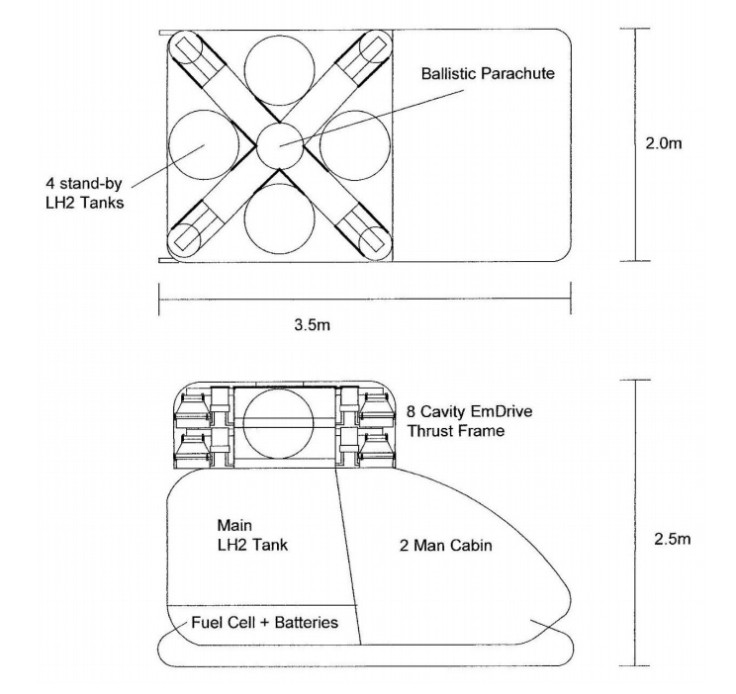EmDrive: Designs for reusable launch vehicle and personal flight vehicle revealed
Roger Shawyer has published detailed concept designs for the third generation of the EmDrive.
The inventor of the EmDrive, a controversial space propulsion device that may speed up space travel, has revealed details of how it could be used to create a reusable launch vehicle to take rockets and satellites into space, as well as for personal flight.
Roger Shawyer has published a presentation about the third generation of the EmDrive, which he says is an improvement on the second generation. The original concept for the EmDrive, developed in 2008, was designed to enable in-orbit propulsion. The second generation, which has been in development since 2010, uses a superconducting cavity.
However, although the second generation of the EmDrive can theoretically produce 3 tonnes of thrust for 1 kilowatt of power, it isn't able to move very far, so it is only useful for marine applications or for diverting asteroids, like in the new CBS sci-fi TV drama Salvation.
Shawyer has long said that his aim for inventing the EmDrive was to help get satellites into space cheaply, to enable more applications and new ways for the human race to combat global warming and the energy crisis. Essentially, the EmDrive needs to be able to move and work as well as a conventional rocket, in order to be a viable solution.
To negate these shortfalls, Shawyer's firm Satellite Propulsion Research Ltd (SPR) has also been researching a third generation of the EmDrive, which solved the acceleration problem by reducing the specific thrust.

So instead of getting 3 tonnes of thrust for every kilowatt, substantially less thrust is produced – but it can be used to accelerate the device (more about this theory can be read in a paper Shawyer presented in Beijing in 2013).
A reusable rocket launcher


The most desirable innovation in the global space industry is currently reusable rocket launch vehicles, and everyone is trying to develop one, from Jeff Bezos' Blue Origin and Elon Musk's SpaceX, to Boeing and Lockheed Martin's joint venture United Launch Alliance.
Roger Shawyer believes the EmDrive could power a reusable launch vehicle too, and to that end, he has outlined a design for a launch vehicle that doesn't burn up on reentry into the Earth's atmosphere, because it just doesn't go very fast.
"The EmDrive thruster accelerates to take it into orbit and decelerates to bring it back down, but it doesn't go very fast through the atmosphere, because all the time the mass of the launch vehicle is supported by the thruster, except when it finally achieves orbital velocity. This was once described by a US Air Force guy as a 'space elevator without cables', which I think is quite apt," Shawyer told IBTimes UK.
"The thruster is always supporting the mass of the vehicle, you decelerate from orbital velocity and almost all of the orbital velocity is lost before you enter the atmosphere. This is completely unlike any other flight profile. You counteract the pull of gravity all the time with the EmDrive thrusters."
Not affected by the atmosphere
According to Shawyer, the EmDrive thruster slows the launch vehicle down so that by the time it hits the atmosphere, it is travelling at only a few hundred miles an hour, so it just flies straight through and isn't really affected by the atmosphere at all.
"The actual air frame could be made by a car manufacturer, it's very lightly stressed, it's not like a rocket or an aeroplane. It doesn't undergo any high stress at all. It will actually be made the same way a sports car is made," Shawyer explained.
"This is why EmDrive is so disruptive, it immediately takes away the business plan of all space rocket manufacturers, and hands it over to car manufacturers, and some of the most forward-looking car manufacturers are in Asia."
Shawyer's launch vehicle demonstrator would feature eight flight cavities in a quad formation, similar to the quadcopter consumer drone, so each corner would feature two cavities. The launch vehicle would have vertical take off and landing (VTOL) and would be able to carry a maximum payload of 100kg.
Personal flight vehicle

Shawyer has also previously mentioned his interest in using the EmDrive on Earth, for example to power a personal flight vehicle. To this end he has now designed a two-seater personal air vehicle that looks similar to the Ehang 184, which would be powered by eight EmDrive cavities and carry a maximum payload of 180kg.
Similar to the launch vehicle, the personal air vehicle prototype would carry a tank of liquid hydrogen, which would be expected to cool down the superconducting cavity and used in a fuel cell to generate electricity to produce microwaves to power the thrusters.
This would enable the personal flight vehicle and the launch vehicle to be totally "green", because the only exhaust produced is water vapour.
"Once you use EmDrive in this way, you can use it for any aerospace application, whether it's in space or in the air.So this is what this presentation is, it is essentially the same thrust package that will put you into orbit or take you out for the day," said Shawyer.
Urban canyons, whereby the height of the buildings are much greater than the width of the road, means that it is a really bad idea to land a helicopter on the street, as the downdraft caused by the helicopter's rotors is dangerous to people, objects and buildings, while also causing the helicopter to lose lift.
"Urban canyons will work in the EmDrive personal flight vehicle because the EmDrive doesn't produce downdraft during take-off and landing," said Shawyer.
"We've tried to look at the real live safety requirements regulations would require. Each thruster pod has its own separate small tank so if you punctured the main tank, you would still have enough in the standby tanks to get you back to earth.
"And if the fuel cells fail, there would be battery back to get you back to Earth, as well as a ballistic parachute."
© Copyright IBTimes 2025. All rights reserved.






















